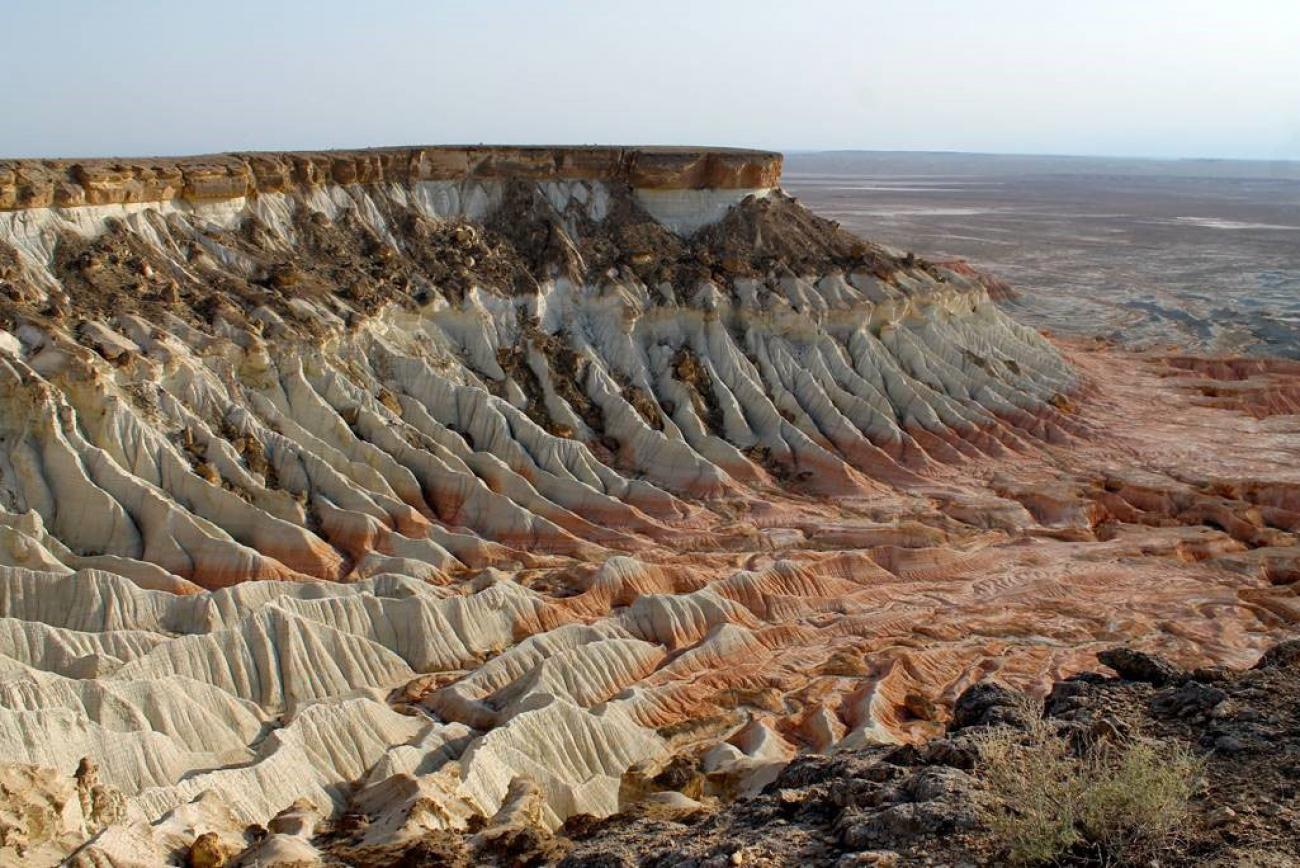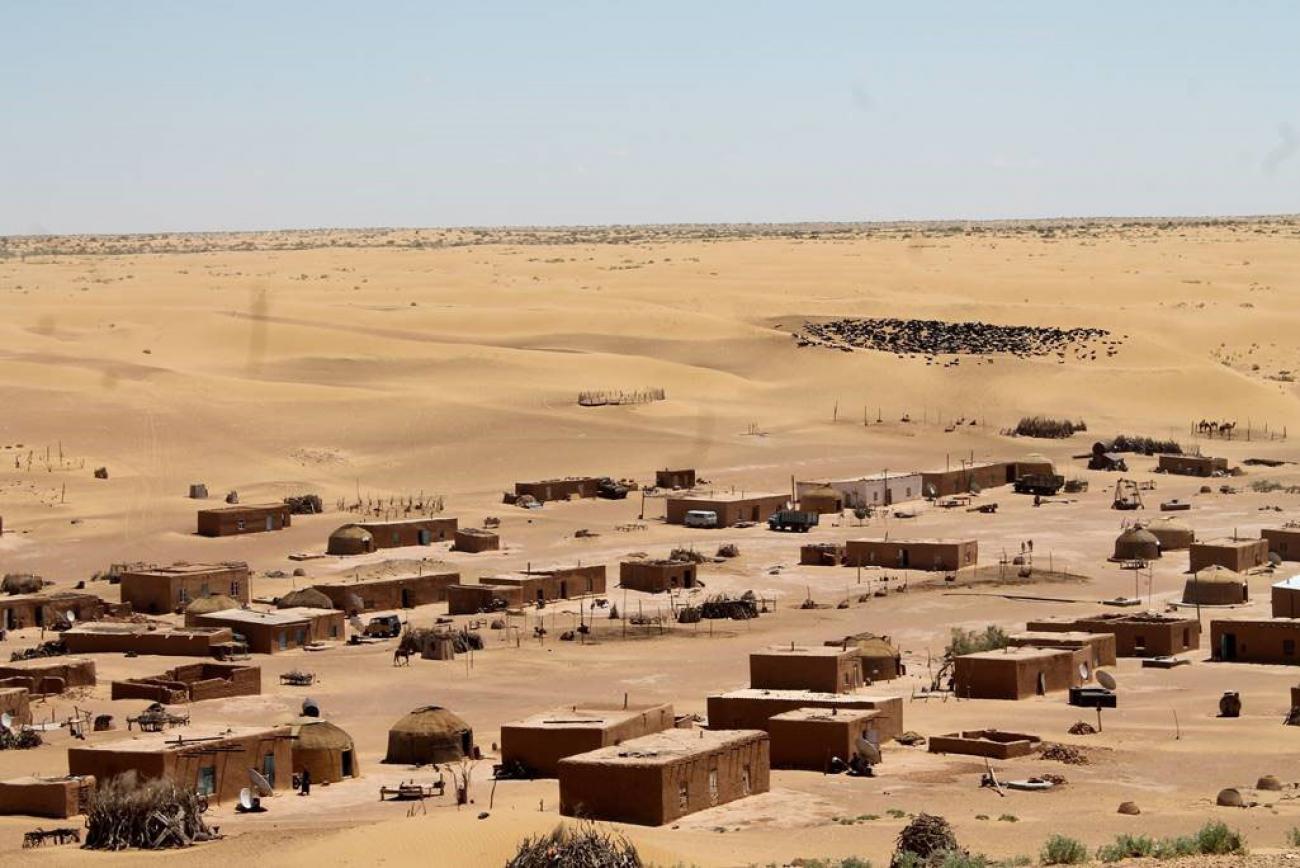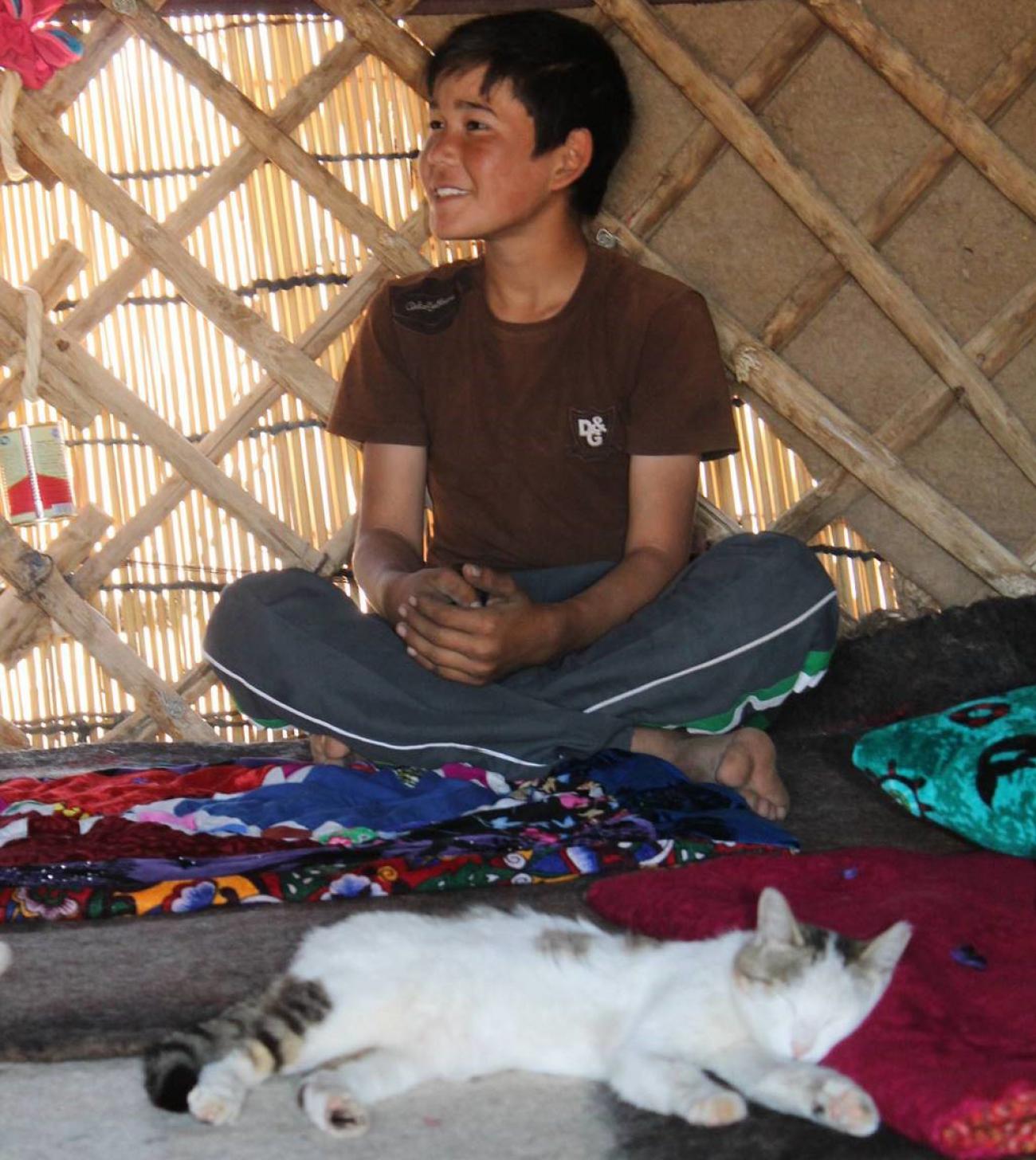Turkmenistan, we were discovering on this recce tour, hasn’t quite yet got the hang of foreign tourists. Staff in government-owned hotels greet us with stares somewhere between trepidation and rabbit-in-the-headlights. Their English is usually very basic, their interaction with overseas tourists extremely rare (Turkmenistan had 6500 tourists last year). A smile and patience wins the day; the staff relax a little as it dawns on them that we’re not aliens from another planet although we might as well be, given that we invariably arrive dishevelled, scruffily dressed and covered in desert dust. Not the image they have of foreigners at all.
We arrived in yet another gleaming marble city, Balkanabat, from the Kopet Dag mountains via Dehistan, an isolated spot in the desert but once one of the principal cities of Western Turkmenistan and a major caravan route. The remains, after being attacked by Genghis Khan, comprise a beautifully decorated portal and a tall 11th century minaret that can still be seen from many miles away. Our dip into the modernity of Balkanabat was in order to collect fresh provisions and fuel (and have a hot shower and a cold beer). The following morning we headed off into the Balkan mountain range, our destination today being the Yankikala Canyons.
We drove for hour upon hour across a mesmerizing landscape of scrub desert and parched, salty plains interspersed with patches of saxaul and the skeletal remains of ferula – a sturdy, tall umbilifer; one wonders how it ever manages to grow to such a height here in the Karakum Desert. The sheer size of the desert, the space and the huge sky make it strangely beautiful in its simplicity. We stopped for lunch at a group of buildings (in the middle of nowhere; how the drivers find it in the labyrinth of desert tracks mostly used by camels and goats remains a mystery), where pilgrims come to worship at the shrine of a Sufi saint, or to inter their dead in the adjoining cemetery. The heat pounded off the concrete yard, so we took shelter in a cool room and ate a picnic lunch. Piles of bedding and carpets, hundreds of teapots, mountains of crockery and cutlery bore testament to the large amount of people who gather here.

By late afternoon, the landscape started to change. Mountain ranges loomed in the distance and, as we drove nearer, we began to discern the Yangikala Canyons. There was a collective sucking of air as we marvelled at the sight before us. Tall, furling mountain escarpments looked like icing dripping off a cake or wax running down a candle. Except these were not mono-coloured; the top layer is a light brown, the bulk a soft white and the bottom layer a glorious shade of pink. The sight went on as far as the eye could see; it had been well worth the day of desert driving to reach such an extraordinary setting. We drove to the top of the escarpment and looked down. We drove down again and set up camp at the base, our tents strategically placed to see the canyons from our tents when we awoke.

A few days later and many more miles of desert covered (ticking off desert wildlife as we went – foxes, rabbits, lizards, wild cats, eagles, falcons to name but a few), we crested a sand dune and were greeted with the sight of a village. Many, many miles from any other habitation, the village of Damla has the look of time having stood still. Mud-walled huts spread across the dusty valley floor, herds of possibly a thousand goats and sheep grazed on the slopes of sparse vegetation, herded by young boys on motorcycles. Makeshift filters removed some of the salt from the water the villagers were drawing from bore wells. Gnarled tree trunks formed corrals for camels and other livestock. It looked like a hard existence. I asked several of the lads if they had ever been to Ashgabat. "Yes", they all replied. But on further enquiry, it transpired that they had only been as far as the camel bazaar at Tolkuchka Bazaar, on the very outskirts of the city; that was far enough. I asked whether they would like to live in the city, to which they all gave a firm "no, this is our home and we like it". To which I think I would agree.

All in all, it has been a remarkable voyage of discovery, of ever-changing landscapes, challenging terrain and an eye-opener into a rarely-seen world.
Jude has recently led our Turkmenistan: The Forgotten 'Stan group tour. We offer a number of group tours and tailor made holidays to Turkmenistan.
